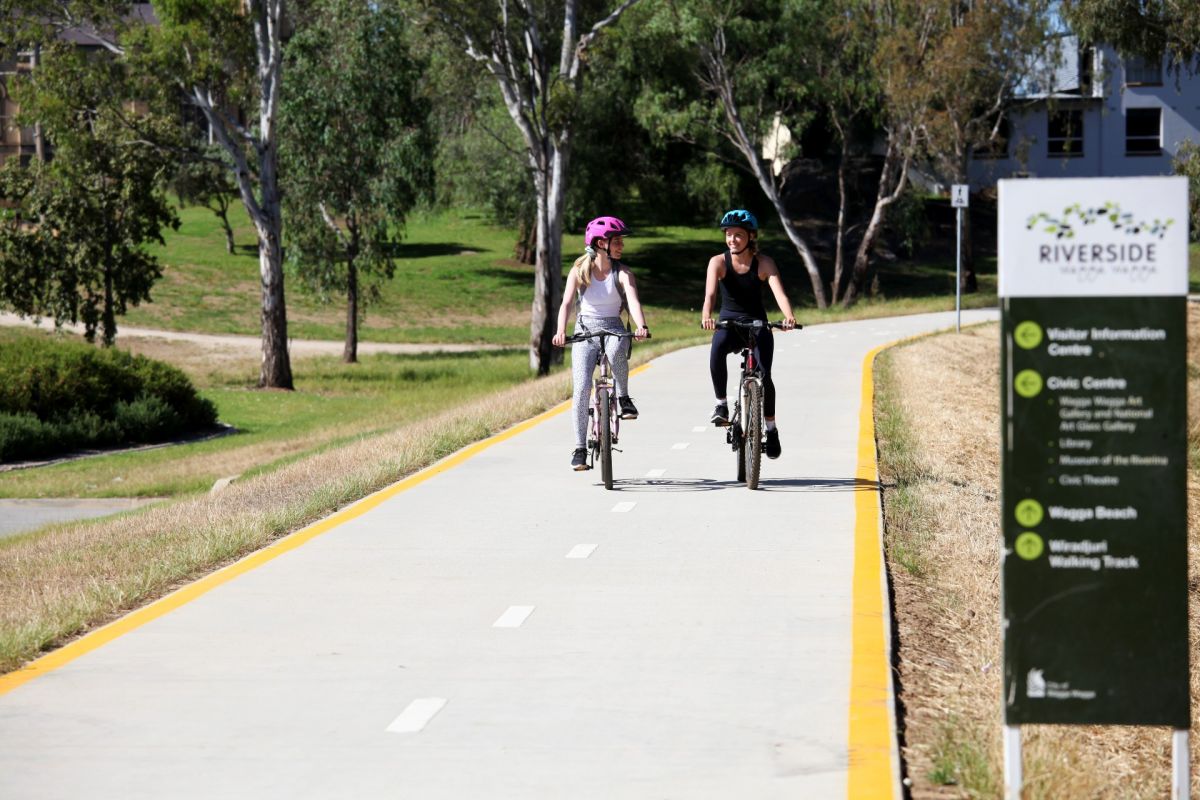
Research project to evaluate Active Travel paths across city
Published: 25 Nov 2021 9:08am
Wagga Wagga’s new network of shared paths will be the focus of a joint research project to evaluate various impacts the Active Travel Plan (ATP) is having on the local community.
Mayor of the City of Wagga Wagga Councillor Greg Conkey OAM welcomed the research initiative, saying the 13 ATP links provide safe options for adults and children to cycle or walk to the CBD, workplaces, schools and educational institutions, and other key destinations.
Wagga Wagga Active Travel Plan
Cr Conkey said the project encourages the community to use non-motorised transport and promotes a healthy lifestyle to a more active community with a reduced reliance on cars.
“One of the great benefits of the project is a more active community leading to improved health outcomes,” Cr Conkey said.
“It enhances the liveability of the city and makes Wagga Wagga a better place to live, work and play.
“It also has the potential to attract new visitors to the city for sporting and recreational opportunities and reduces barriers to participation in cycling with increased safety.”
The two-year research study is a partnership between the Prevention Research Collaboration Sydney School of Public Health at the University of Sydney, Wagga Wagga City Council, Transport for NSW, iMOVE and Murrumbidgee Local Health District.

Council’s Strategic Asset Planner Ben Creighton said the benefits of the infrastructure in improving activity levels in the community and city interconnectedness will be measured and feedback from residents and visitors is important.
“The research project is designed to assess a number of impacts and outcomes on the community and we are keen to hear your views and learn about your experiences in using the shared path network,” Mr Creighton said.
“These include community awareness of the walking and cycling links and their use, who is using the links and for what purpose, any changes in use over time and how individuals, organisations and the community benefit from the ATP,” Mr Creighton said.
The ATP’s 56km of shared paths is the largest active travel network to be built in a regional centre which makes it the first of its kind to be undertaken in NSW.
This is an exciting opportunity for research to better understand the benefits of active travel, says chief investigator Dr Margaret Thomas from the University of Sydney.
Researchers will assess over the next two years whether use of the infrastructure increases over time, and if that has contributed to increased walking and cycling in the community.

A number of different research activities will occur in Wagga Wagga from November 2021 to October 2023 to provide data and information for the research with community members invited to participate.
An online survey open to all of the community will be conducted in March/April 2022 and March/April 2023.
ATP observers will be stationed on several links of the network on various dates starting in November 2021 through to 2022 and 2023 to record use of the shared paths.
Users of the paths will be asked to participate to answer a few survey questions which will be conducted once in 2022 and again in 2023.
The ATP is funded by the NSW Government and Wagga Wagga City Council and the research project is co-funded by Transport for NSW, University of Sydney and iMOVE with support from Wagga Wagga City Council and Murrumbidgee Local Health District.
